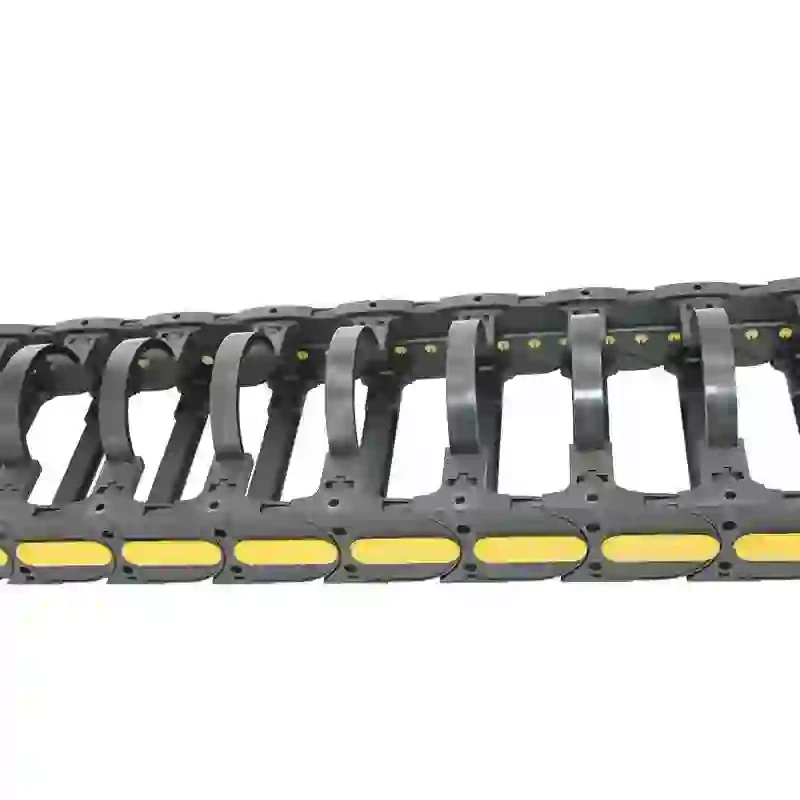Cable Management Solutions for Efficient and Organized Wiring Systems
The Versatility and Importance of Cable Tracks in Modern Industries
In today's rapidly evolving technological landscape, ensuring the seamless movement and protection of power and data transmission is more crucial than ever. One of the most effective solutions to achieve this is the use of cable tracks. These specialized systems are designed to guide and protect cables in various industrial applications, providing an organized and efficient means to manage the intricate networks of wires that are essential for operation.
What are Cable Tracks?
Cable tracks, also known as cable carriers or drag chains, are mechanical devices used to house and guide cables or hoses in a controlled environment. They consist of a series of interconnected links that create a flexible channel for cables to move back and forth. The design of cable tracks allows them to accommodate multiple cables, protecting them from wear and tear while facilitating their movement in machinery, robotics, and various automated systems.
Typically constructed from durable materials such as plastic, metal, or composite materials, cable tracks are available in various sizes and configurations. Their design often includes features such as snap-open links for easy cable loading and unloading, curved sections for directing cables around bends, and various mounting options for versatile installation.
Applications Across Industries
Cable tracks find applications in numerous sectors, each benefiting from their unique features and capabilities. In the manufacturing industry, for instance, cable tracks are extensively used in CNC machines and industrial robots. They mitigate the risk of cables tangling or getting damaged during the complex movements of these machines, ensuring uninterrupted operations and reducing downtime.
In the automotive industry, cable tracks play a vital role in electric vehicles and conveyor systems. They help manage the extensive wiring needed for power and data transmission in these sophisticated vehicles, allowing for efficient assembly line processes. Similarly, in the entertainment sector, cable tracks are used in stage machinery to manage lighting and sound equipment, creating a seamless experience for audiences.
cable track

Furthermore, cable tracks are increasingly crucial in the realm of renewable energy. Wind turbines and solar panels rely on cable management systems to maintain the integrity and efficiency of their electronic components amidst harsh environmental conditions. Implementing cable tracks enables these systems to operate optimally, ensuring the reliability of energy production.
Benefits of Using Cable Tracks
The advantages of integrating cable tracks into industrial setups are numerous. Firstly, they enhance safety by protecting cables from mechanical damage, which can lead to costly repairs and maintenance. By organizing cables, cable tracks also reduce the risk of accidental tripping or entanglement, promoting a safer working environment.
Secondly, the use of cable tracks leads to more efficient space utilization. Rather than having cables sprawled haphazardly across a workspace, cable tracks provide a structured pathway, thereby optimizing floor space and facilitating easier navigation. This organization makes maintenance tasks simpler, as technicians can quickly access and identify cables that may require attention.
Moreover, cable tracks contribute to improved productivity. By safeguarding electrical systems from damage, they minimize downtime—a critical factor in any manufacturing or production environment. The reduced risk of cable-related failures ensures that machinery operates smoothly, ultimately translating to increased output and profitability.
Future Trends in Cable Track Technology
As industries continue to evolve, so too does the technology behind cable tracks. Innovations in materials science are leading to lighter, yet more durable cable carriers, while advancements in automation and IoT (Internet of Things) are enabling smarter cable management systems. These systems can monitor cable health and predict failures, providing a proactive approach to maintenance.
In conclusion, cable tracks are indispensable components in the modern industrial landscape. Their ability to protect, manage, and streamline the use of cables and hoses makes them essential for various applications. As industries continue to advance, investing in effective cable management solutions will play a vital role in optimizing operations, enhancing safety, and fostering innovation within the market. The future of cable tracks looks promising, paving the way for even more sophisticated systems that can meet the demands of an ever-changing technological world.








